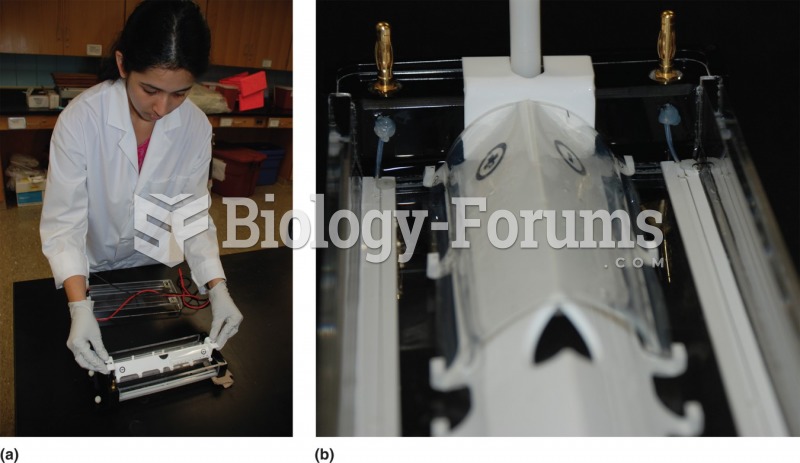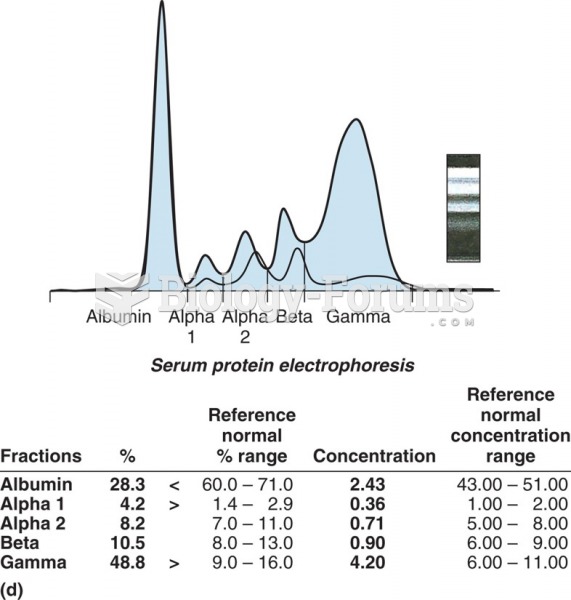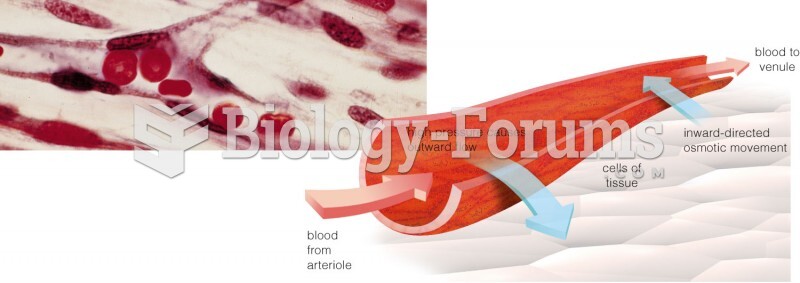|
|
|
The most common treatment options for addiction include psychotherapy, support groups, and individual counseling.
The shortest mature adult human of whom there is independent evidence was Gul Mohammed in India. In 1990, he was measured in New Delhi and stood 22.5 inches tall.
The first-known contraceptive was crocodile dung, used in Egypt in 2000 BC. Condoms were also reportedly used, made of animal bladders or intestines.
Asthma attacks and symptoms usually get started by specific triggers (such as viruses, allergies, gases, and air particles). You should talk to your doctor about these triggers and find ways to avoid or get rid of them.
Oxytocin is recommended only for pregnancies that have a medical reason for inducing labor (such as eclampsia) and is not recommended for elective procedures or for making the birthing process more convenient.
 Serum protein electrophoresis photo of gel just placed in electrophoresis apparatus showing that the ...
Serum protein electrophoresis photo of gel just placed in electrophoresis apparatus showing that the ...
 Electrophoresis gel in a densitometer. SPE densitometry showing polyclonal gammmopathy with a broad ...
Electrophoresis gel in a densitometer. SPE densitometry showing polyclonal gammmopathy with a broad ...





